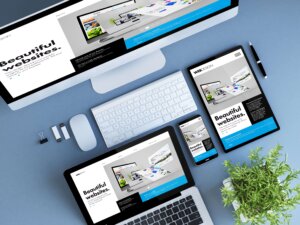Guest post by Joe Cecere
Fifty years ago, the concept of design was a fleeting thought
Often reserved for elite academic and social circles, design didn’t offer a real value in common, everyday lives. But over the last two decades, we’ve seen design evolve to nothing short of a populist movement—one that’s infiltrated the hearts and minds of all consumers without distinction. Whether it’s a teapot, an e-tablet, a logo, a mantra or a train station, design has become part of our culture. It’s how we live.
Today, successful brands can’t be satisfied with design’s status quo. In boardrooms and labs, they’re reaching for that heroic “next.”
In the post-Steve Jobs era, it’s appropriate to ask: What’s brewing for the next, new design revolution? And even more importantly, what needs to happen to make a revolution even possible? While design at its fundamental core needs to stay true to its principles, the big ‘next’ will be in how brands are willing to turn design on its head, reinventing the power it has and taking more chances. People are ready, the economy is improving, and companies are starting to get their confidence back.
Here are some key ideas that will shape whatever transpires in the world of commerce, brands and in public life:
Risk is the new safe
While all companies desire breakthrough inventions and healthy bottom lines, the truly progressive ones will accommodate epic failures—to learn from and push innovation. The brands that allow riskier, bolder, more unconventional ways of thinking have the capacity to start a revolution.
Consumers are hungrier than ever
The bar continues to be raised on design. People have an unquenchable curiosity for the next hottest, smartest, kindest, softest, brightest. In other words, they won’t be satisfied with more of the same. Brands will need to activate design in such a way that it changes the paradigm of how we experience people, places, ideas and objects. A tough order, but well worth the investment.
Elections are more than political
In 2008, then presidential candidate Barack Obama used design like no other in political history—engaging Americans in a powerful, personal message and a modern mix of media. Now, four years later, candidates need to trump that design experience (President Obama included!). If design has the power to enlighten voters, it can transcend the divisive issues of our time and bring forth a winner.
Design from the inside out
Authentic brands must build an internal design culture to be relevant. But it needs to be a philosophy, not a department. That means a willingness for companies to eliminate ego and be open to the unexpected. A culture of strategic design explores, listens, learns and creates. Intuitive and collaborative in nature, it considers the long-term success for a brand as opposed to short-term fixes. With an empowering model like that, employees will offer their best. With design on your side, success is virtually guaranteed.
Ideas need strong roots
The biggest, best ideas are well thought out and run deep, with a capacity to branch out into many opportunities, including products, services and information platforms. Once you have an idea, build on it. Nurture it. See where it takes you. Who knows? It could be the next iPhone.
Discern appropriately
If Henry Ford had listened to his contemporaries, he would have probably bred a faster horse. But digging deeper and acknowledging other innovations before his time (think: wheel), he was able to transform an entire mode of transportation.
Life in 2013 will, in some respects, pose more questions than answers. Who will be the next Steve Jobs? What other avenues will be explored in the sustainability movement? How can we live more responsibly? And, yes, who will be the next President of the United States?
Whatever happens next, we know from experience that when design leads, greatness follows.
——————
For more resources, see our Library topics Marketing and Social Networking.
.. _____ ..
About Little & Company
Joe Cecere is President and Chief Creative Officer of Little & Company (www.littleco.com), which has been showing companies of all sizes how design-driven businesses can exceed customer expectations and deliver significant results. Utilizing a unique combination of strategic resources, designers and writing talent, the firm creatively solves business problems to help clients across industries — including Target, Medtronic, Microsoft, Wells Fargo, American Craft Council and many others — to launch, grow and strengthen their brands.
The result is a flourishing collaborative environment that readily benefits clients ranging from retail and healthcare to financial services, education and a handful of high-profile non-profit organizations. Little & Company is a Nationally Certified Women’s Business Enterprise.
 Sections of this topic
Sections of this topic















